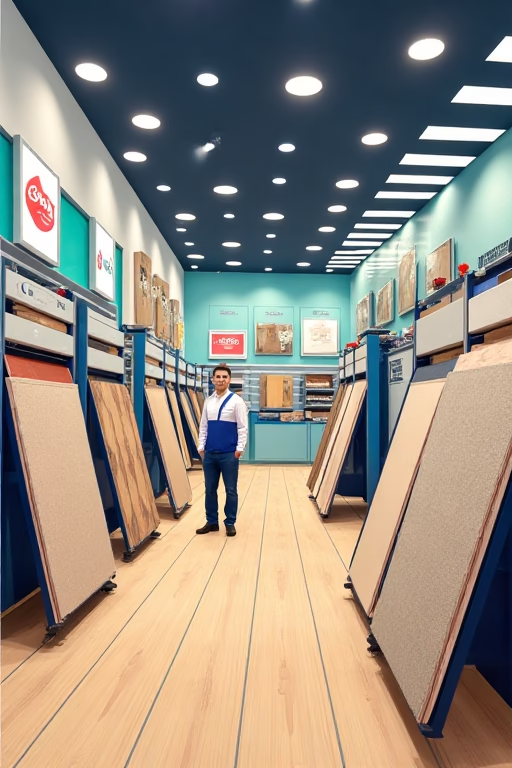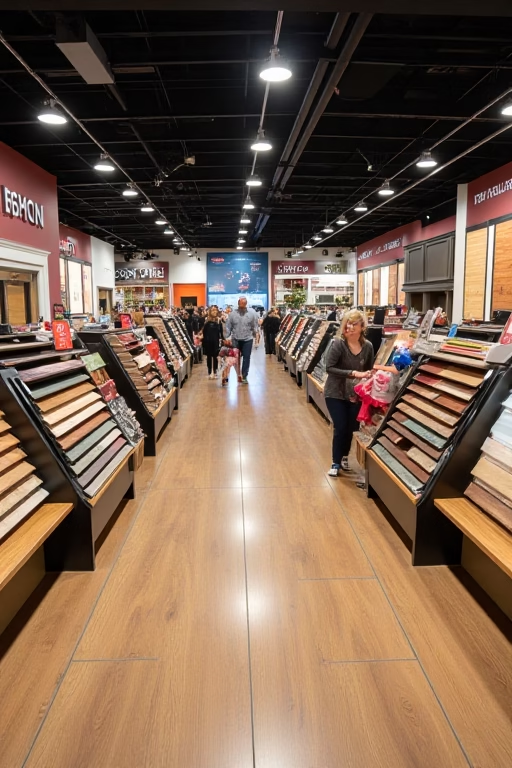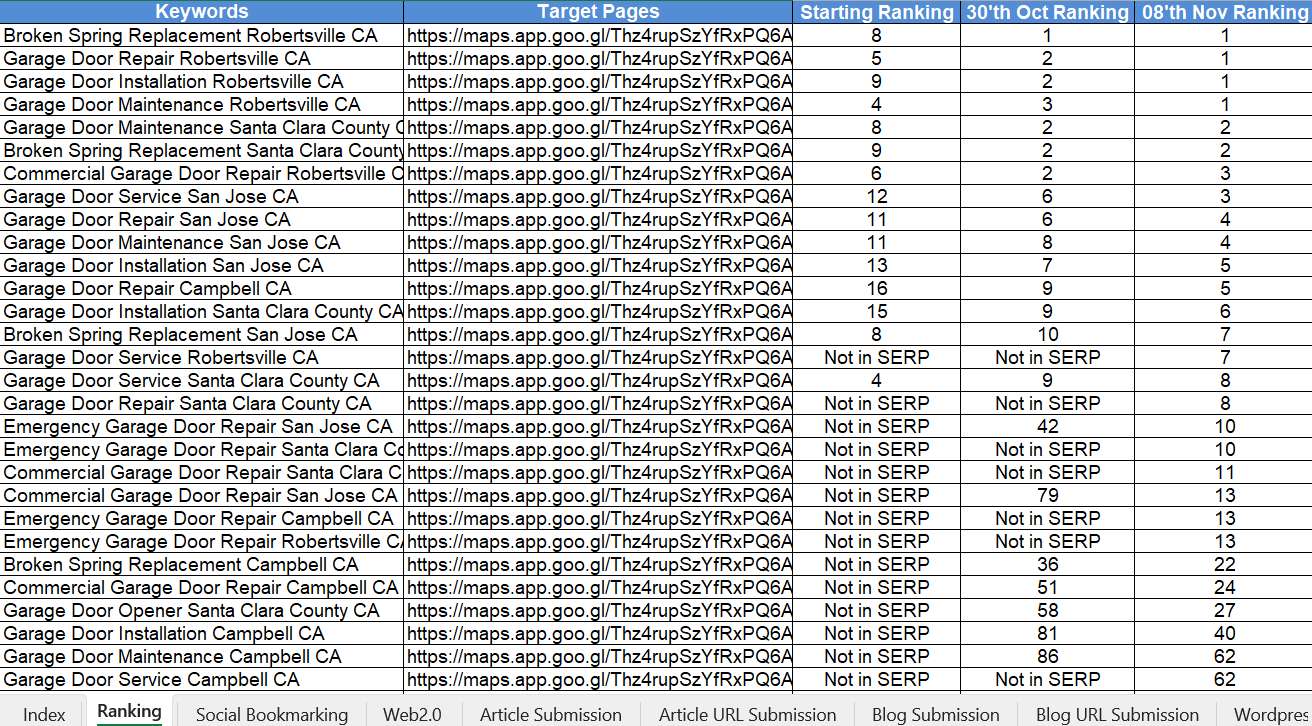5 Ways to Advertise Your Flooring Business Locally
5 Ways to Advertise Your Flooring Business Locally
Effective strategies to attract more customers and grow your flooring business in your community
In the competitive flooring industry, establishing a strong local presence is essential for attracting and retaining customers. Local advertising allows flooring businesses to connect with their community, showcase their products and services, and build lasting relationships with clients. This comprehensive guide explores five effective ways to advertise your flooring business locally, providing strategies, tips, and best practices to help you maximize your marketing efforts and achieve sustainable growth.
1. Optimize Your Local SEO
Local Search Engine Optimization (SEO) is a crucial strategy for flooring businesses aiming to enhance their visibility in local search results. By optimizing your online presence for local searches, you can attract more customers from your immediate area who are actively seeking flooring services.
Why Local SEO Matters
Local SEO helps your flooring business appear in search results when potential customers search for services like "flooring installers near me" or "hardwood flooring in [Your City]." By ranking higher in these localized search results, you increase the likelihood of attracting nearby customers who are ready to make a purchase.
Key Local SEO Strategies
- Google My Business (GMB): Create and optimize your GMB listing by providing accurate business information, uploading high-quality images, and encouraging customer reviews. A well-maintained GMB profile can significantly improve your local search rankings and attract more customers.
- Local Keywords: Incorporate local keywords into your website content, meta descriptions, and titles. Use phrases that include your city or neighborhood to target local searches effectively.
- Local Citations: Ensure your business is listed consistently across local directories, such as Yelp, Yellow Pages, and local chamber of commerce websites. Consistent NAP (Name, Address, Phone Number) information enhances your local SEO credibility.
- Mobile Optimization: Optimize your website for mobile devices, as many local searches are performed on smartphones. A mobile-friendly website ensures a positive user experience and improves your search rankings.
- Localized Content: Create content that addresses local events, news, or community projects. This not only engages local audiences but also signals to search engines that your business is an active part of the community.
Measuring Local SEO Success
Use tools like Google Analytics and Google Search Console to monitor your website’s performance in local searches. Track metrics such as organic traffic, local keyword rankings, and conversion rates to assess the effectiveness of your local SEO efforts.
2. Leverage Social Media Marketing
Social media platforms offer unparalleled opportunities for flooring businesses to connect with their local audience, showcase their work, and build a loyal customer base. By strategically using social media, you can enhance your brand visibility and engage with potential customers in meaningful ways.
Choosing the Right Platforms
Identify which social media platforms are most popular among your target audience. For flooring businesses, platforms like Instagram, Facebook, and Pinterest are particularly effective due to their visual nature and high engagement rates.
Creating Engaging Content
- Project Showcases: Share high-quality images and videos of completed flooring projects to demonstrate your expertise and the quality of your work.
- Before-and-After Transformations: Highlight the impact of your flooring services by showcasing before-and-after photos that illustrate the difference your work makes.
- Customer Testimonials: Post testimonials and reviews from satisfied customers to build trust and credibility.
- Educational Content: Share tips on flooring maintenance, trends in flooring design, and information about different flooring materials to position your business as an industry expert.
- Behind-the-Scenes: Offer a glimpse into your business operations, such as installation processes, team introductions, and day-to-day activities, to humanize your brand.
Advertising on Social Media
Invest in paid social media advertising to reach a larger and more targeted audience. Platforms like Facebook and Instagram offer advanced targeting options that allow you to advertise to specific demographics, locations, and interests relevant to your flooring business.
- Sponsored Posts: Promote your best content to increase its reach and engagement.
- Targeted Ads: Create ads that target users based on their location, interests, and behaviors to attract potential customers in your area.
- Retargeting Campaigns: Use retargeting ads to reach users who have previously visited your website or engaged with your social media profiles, reminding them of your services and encouraging them to take action.
Engaging with Your Audience
Active engagement with your audience on social media helps build relationships and fosters a sense of community around your brand. Respond promptly to comments, messages, and reviews, and encourage interaction through polls, contests, and Q&A sessions.
3. Engage with the Community
Building strong relationships within your local community can significantly enhance your flooring business's reputation and customer loyalty. Community engagement involves participating in local events, supporting local causes, and fostering connections with residents and other businesses.
Participating in Local Events
Attend and sponsor local events such as home shows, trade fairs, community festivals, and charity events. These events provide opportunities to showcase your flooring products, demonstrate your expertise, and interact directly with potential customers.
- Home Improvement Expos: Exhibit your flooring products and services at home improvement expos to reach homeowners and contractors interested in remodeling projects.
- Community Festivals: Sponsor or participate in community festivals to increase brand visibility and demonstrate your commitment to the local area.
- Charity Events: Support local charities and participate in fundraising events to build goodwill and strengthen your community ties.
Building Partnerships with Local Businesses
Collaborate with other local businesses that complement your flooring services, such as interior designers, home builders, real estate agents, and furniture stores. These partnerships can lead to mutual referrals, joint marketing campaigns, and shared customer bases.
- Referral Programs: Establish referral programs with partner businesses to incentivize them to refer customers to your flooring services.
- Joint Promotions: Create joint promotional campaigns with partners, such as bundled services or special discounts, to attract a wider audience.
- Networking Events: Attend local networking events to build connections with other business owners and professionals in your community.
Supporting Local Causes
Showcase your business's commitment to the community by supporting local causes and initiatives. This can include donating to local charities, sponsoring community projects, or volunteering your services for non-profit organizations.
- Charitable Donations: Donate a portion of your profits to local charities or participate in fundraising events to support important causes in your community.
- Community Projects: Sponsor or contribute to community improvement projects, such as park renovations or public space enhancements, to demonstrate your investment in the area's development.
- Volunteer Work: Encourage your team to volunteer their time and expertise for community events and initiatives, fostering a positive company image and strengthening local relationships.
4. Implement Direct Mail Campaigns
Direct mail campaigns involve sending promotional materials directly to potential customers' mailboxes. This traditional marketing method remains effective for flooring businesses, especially when combined with digital strategies.
Designing Effective Direct Mail Pieces
The success of a direct mail campaign depends on the design and content of your mailers. They should be visually appealing, informative, and include a clear call-to-action (CTA) to encourage recipients to take the next step.
- Eye-Catching Design: Use high-quality images of your flooring products, attractive layouts, and your brand's color scheme to make your mailers stand out.
- Compelling Offers: Include special promotions, discounts, or exclusive offers to incentivize recipients to engage with your business.
- Clear CTA: Provide a clear and direct CTA, such as visiting your showroom, scheduling a consultation, or calling for a free estimate.
- Personalization: Personalize your mailers with the recipient's name and tailor the content to address their specific needs and preferences.
Targeting the Right Audience
To maximize the effectiveness of your direct mail campaigns, it's essential to target the right audience. Use demographic data, geographic targeting, and customer segmentation to ensure your mailers reach individuals and households that are most likely to require flooring services.
- Demographic Targeting: Focus on demographics such as age, income level, homeownership status, and family size to identify potential customers.
- Geographic Targeting: Concentrate your efforts on specific neighborhoods, zip codes, or regions where your flooring services are available and in demand.
- Customer Segmentation: Segment your mailing list based on factors like previous interactions, purchase history, and customer preferences to deliver more relevant and personalized content.
Measuring Direct Mail Campaign Success
Track the performance of your direct mail campaigns by monitoring response rates, conversion rates, and return on investment (ROI). Include unique promo codes or dedicated phone numbers to attribute responses directly to your mailers.
- Response Tracking: Use unique URLs, promo codes, or phone numbers to track responses and determine which mailers are generating the most interest.
- Conversion Analysis: Analyze the number of conversions generated from each campaign to assess its effectiveness and identify areas for improvement.
- ROI Calculation: Compare the costs of your direct mail campaigns against the revenue generated to determine the overall ROI and justify future investments.
5. Partner with Local Businesses
Forming partnerships with other local businesses can significantly enhance your advertising efforts and expand your customer base. Collaborations can lead to mutual benefits, such as shared marketing resources, referrals, and increased brand exposure.
Identifying Potential Partners
Identify local businesses that complement your flooring services and share a similar target audience. Potential partners may include:
- Interior Designers: Collaborate with interior designers who can recommend your flooring services to their clients.
- Home Builders and Contractors: Partner with home builders and contractors who work on new constructions and renovations, providing them with reliable flooring solutions.
- Real Estate Agents: Work with real estate agents who can refer your flooring services to new homeowners looking to improve their properties.
- Furniture Stores: Team up with furniture stores to offer bundled services or cross-promotions, enhancing the overall home furnishing experience for customers.
Creating Joint Marketing Campaigns
Joint marketing campaigns can amplify your advertising reach and create synergies between partnering businesses. Examples of joint campaigns include:
- Co-Branded Promotions: Create co-branded promotional materials that highlight both businesses, such as flyers, brochures, or digital ads.
- Exclusive Offers: Offer exclusive discounts or packages to customers referred by your partners, incentivizing them to choose your flooring services.
- Event Sponsorship: Sponsor or host events together, such as home improvement workshops, design seminars, or community gatherings, to engage with a broader audience.
Referral Programs
Implement referral programs that reward partners for referring customers to your flooring business. This encourages ongoing collaboration and ensures a steady stream of referrals from trusted local businesses.
- Incentive Structures: Offer incentives such as commissions, discounts, or gift cards to partners who successfully refer new customers.
- Easy Referral Processes: Make it simple for partners to refer customers by providing them with easy-to-use referral tools, tracking systems, and marketing materials.
- Regular Communication: Maintain regular communication with your partners to keep them informed about your services, promotions, and any updates that may interest them.
Building Long-Term Relationships
Focus on building long-term, mutually beneficial relationships with your local business partners. Trust and reliability are key components of successful partnerships, ensuring that both businesses benefit from the collaboration over time.
- Consistent Quality: Ensure that your flooring products and services consistently meet high standards, as this reflects positively on your partners who refer your business.
- Support and Collaboration: Offer support to your partners by sharing marketing resources, providing training, or assisting with their marketing efforts.
- Feedback and Improvement: Seek feedback from your partners on how the partnership is performing and look for ways to improve and enhance the collaboration.
Conclusion
Advertising your flooring business locally requires a strategic approach that combines digital and traditional marketing methods to reach and engage your target audience effectively. By optimizing your local SEO, leveraging social media marketing, engaging with the community, implementing direct mail campaigns, and partnering with local businesses, you can enhance your brand visibility, attract more customers, and drive sustainable growth for your flooring business.
At Market Wiz, we understand the unique challenges of the flooring industry and are committed to helping businesses like yours succeed through tailored marketing strategies and expert guidance. Implement these five local advertising methods to position your flooring business as a trusted and preferred choice in your community.
Frequently Asked Questions (Q&A)
1. What are the best local advertising methods for a flooring business?
The best local advertising methods for a flooring business include local SEO, social media marketing, community engagement, direct mail campaigns, and partnerships with local businesses.
2. How can social media help advertise my flooring business locally?
Social media can help advertise your flooring business locally by allowing you to target specific geographic areas, engage with the community through posts and ads, showcase your work with images and videos, and interact directly with potential customers.
3. Why is local SEO important for flooring businesses?
Local SEO is important for flooring businesses because it helps your business appear in local search results when potential customers search for flooring services in your area, increasing visibility and attracting more local customers.
4. How can participating in community events benefit my flooring business?
Participating in community events can benefit your flooring business by increasing brand awareness, building relationships with local residents, showcasing your products and services, and demonstrating your commitment to the community.
5. What is the role of direct mail in local advertising for flooring businesses?
Direct mail plays a role in local advertising for flooring businesses by allowing you to send targeted promotions, catalogs, and special offers directly to potential customers' homes, increasing the likelihood of attracting local clients.
6. How can partnerships with local businesses enhance my flooring business advertising?
Partnerships with local businesses can enhance your flooring business advertising by expanding your reach, leveraging each other's customer bases, co-hosting events, and creating joint marketing campaigns that benefit both businesses.
7. What types of content should I use on social media to advertise my flooring business?
On social media, you should use high-quality images of your flooring projects, before-and-after transformations, customer testimonials, informative videos, behind-the-scenes looks at your work process, and engaging posts about design trends and tips.
8. How do I optimize my flooring business website for local SEO?
To optimize your flooring business website for local SEO, include your business name, address, and phone number (NAP) on every page, create location-specific content, optimize for local keywords, ensure your website is mobile-friendly, and obtain local backlinks and reviews.
9. What are the benefits of using Google My Business for my flooring business?
Using Google My Business for your flooring business benefits you by improving your local search visibility, allowing you to display essential information like hours and location, enabling customer reviews, and providing insights into how customers find and interact with your business.
10. How can I leverage customer reviews to advertise my flooring business locally?
You can leverage customer reviews by showcasing them on your website and social media, responding to reviews to show engagement, encouraging satisfied customers to leave positive reviews, and using testimonials in your marketing materials to build trust with potential customers.
11. What role do local directories play in advertising my flooring business?
Local directories play a role in advertising your flooring business by increasing your online presence, improving local SEO, providing additional platforms for customer reviews, and making it easier for potential customers to find and contact your business.
12. How can email marketing be used to promote my flooring business locally?
Email marketing can be used to promote your flooring business locally by sending newsletters with updates and promotions, sharing project showcases, offering exclusive discounts to subscribers, and providing valuable content like maintenance tips and design inspiration.
13. What is the effectiveness of offering local promotions and discounts?
Offering local promotions and discounts is effective because it incentivizes potential customers in your area to choose your flooring services over competitors, increases customer loyalty, and can generate word-of-mouth referrals within the community.
14. How can I use signage and local advertising materials for my flooring business?
You can use signage and local advertising materials by placing eye-catching signs in strategic locations, distributing flyers and brochures in neighborhoods, advertising in local newspapers and magazines, and utilizing billboards to increase brand visibility in your area.
15. What are some cost-effective local advertising methods for flooring businesses?
Some cost-effective local advertising methods for flooring businesses include leveraging social media, optimizing for local SEO, participating in community events, utilizing email marketing, and encouraging customer referrals and reviews.
16. How important is community involvement in local advertising?
Community involvement is highly important in local advertising as it builds trust and credibility, fosters relationships with local residents, enhances brand reputation, and increases word-of-mouth referrals, all of which contribute to business growth.
17. Can local sponsorships help advertise my flooring business?
Yes, local sponsorships can help advertise your flooring business by increasing brand visibility, associating your business with community events or causes, and demonstrating your commitment to supporting local initiatives, which can attract customers who value community-oriented businesses.
18. How do I measure the success of my local advertising campaigns?
You can measure the success of your local advertising campaigns by tracking response rates, conversion rates, and return on investment (ROI). Include unique promo codes or dedicated phone numbers to attribute responses directly to your mailers.
19. What role does branding play in local advertising for flooring businesses?
Branding plays a crucial role in local advertising by establishing a recognizable and memorable identity, differentiating your business from competitors, conveying your values and quality standards, and building trust and loyalty among local customers.
20. How can I utilize local influencers to advertise my flooring business?
You can utilize local influencers by partnering with them to promote your flooring products through their social media channels, hosting joint events or workshops, providing them with exclusive discounts to share with their followers, and encouraging them to create authentic content that showcases your flooring solutions.
25 Extra Keywords for Your Digital Marketing Agency Website
- Digital marketing strategies
- SEO services
- Social media management
- PPC advertising
- Content creation
- Brand development
- Online marketing solutions
- Email marketing campaigns
- Website design and development
- Conversion rate optimization
- Influencer marketing
- Video marketing services
- Local SEO optimization
- Mobile marketing
- E-commerce marketing
- Analytics and reporting
- Marketing automation
- Reputation management
- Graphic design services
- Digital advertising agency
- Search engine marketing
- Lead generation strategies
- Marketing consultation
- Retargeting campaigns
- Comprehensive marketing plans
5 Ways to Advertise Your Flooring Business Locally Read More »





